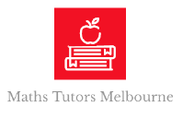|
Teachers and maths educators believe that engaging students in visual maths can help them improve their skills and bring their learning to the next level. During one study, several activities for learning maths facts were presented to several students, all of which had visual representations. Conclusions of these studies suggested that students are more engaged and interested in learning maths.
There is a common perception that visual mathematics is just a crutch for abstract mathematics. However, curriculum guides suggest that physical and manipulative sketching can help students learn abstract maths more easily. So, the widespread lack of appreciation is due to the misconceptions that visual maths is only a supplemental method for learning. In fact, a ground-breaking new study by Joonkoo Park and Elizabeth Brannon in 2013, found that learning occurs when a person uses various areas of his or her brain. Therefore, when students work with numbers, symbols, and analogy, they use different parts of their brains. This will develop and build their visual and spatial skills and may even help them boost their learning capabilities, especially when they are tackling mathematical problems. Additionally, researchers have found that training students through visual representations may help improve their skills and performance in numerical maths as well. So, visual training is a viable tool that can help students comparable to numerical training. Visual maths and its benefits In visual maths, teachers engage students with images and visual cues instead of numbers. Through decades of work with high tech companies, students, and maths educators, people are now more inspired and excited to see mathematics as pictures and symbols. For example, solving a standard arithmetic problem like 20 x 5, a teacher will provide students with a visual solution to a problem. So, each of the visual highlights corresponds to the solution inside the problem and this can help student develop their understanding of multiplication. In fact, pictures can provide students with a way to see mathematical ideas, which supports them in understanding difficult math concepts. Therefore, visual mathematics can facilitate a high level of thinking, enabling communication so students can see maths more creatively. Teachers and tutors can use this method to create mathematical excitement in both the classroom and one on one tuition. With any mathematics, teachers can ask their students for various ways to see and solve problems. This can be done by encouraging discussions and letting students see mathematical problems in a different light – giving them ways to solve it based on their understanding. If you think your child may need a tutor to assist with their development in maths, find out here about when to look for a tutor. Comments are closed.
|
AuthorWrite something about yourself. No need to be fancy, just an overview. Archives
June 2024
Categories |
|
Maths Tutors Melbourne |
